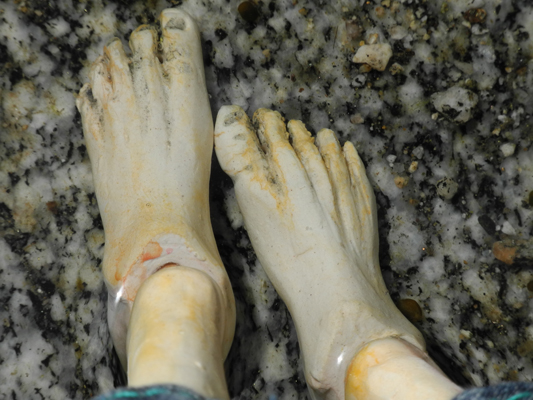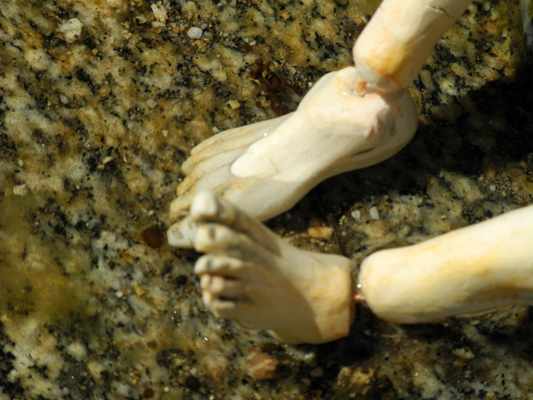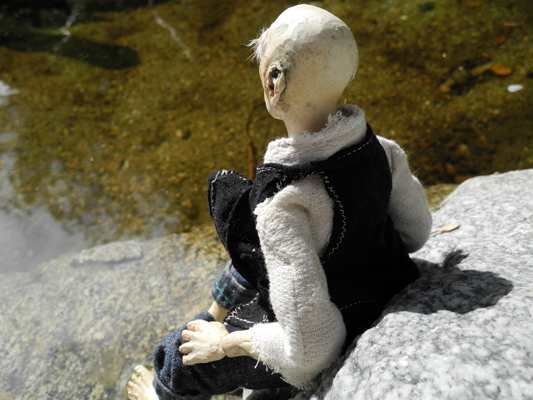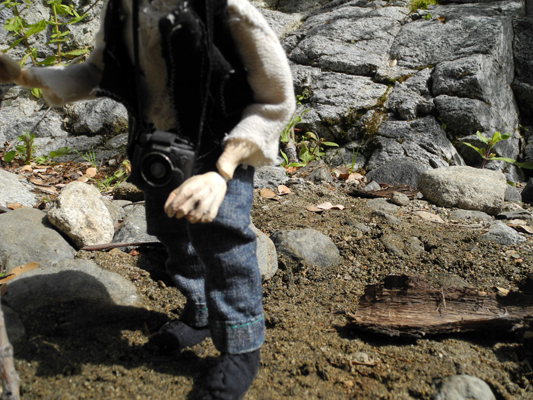Since showing the slide-show has thrown me somehow back in discussion with the Animation crowd out there, I am once again confronted with the critique my film work is “too choppy, too blurry and the transition is not smooth enough.”
This is not due to lack of technical skill, because I was unable to do any better I had to settle for the next I can. I am making these decisions after a lengthy through process and intentionally, after I initially tried it the conventional way and the results did nowhere near satisfy me.
Growing up in continental Europe provided me with a constant availability of direct interaction with old art and craft, from anywhere up to 1000 years backwards from our time, it is anywhere and everywhere, integrated in daily contemporary life.
The advantage is: one has seen many things and can draw from that visual information.
The disadvantage is: one has seen many things and automatically draws from that visual information.
If one is used to a long heritage of visual language one is inclined to take things for granted, no matter if they apply, still apply or no longer apply in that form for various reasons. Because in some media I am working in now I am actually self-taught, like puppet making and photographing I tried to create decent puppets and images of them the way I “thought” they “should” look like, but then by critical self-assessment realized, they only looked like many other puppets and puppet-images, but they did not look anywhere near like people when we actually SEE them and that was and still is important to me.
I am since my first serious film project in 2013 “I anyways live until I die” put in front of the problem that I have trained as an artist for years and years and eventually started using cameras and other photographic lenses, that one assumes create a perfect reproduction of what is depicted by them and that seems to be also the objective (as opposed to other art, such as for example painting these days does not ask for that.)
But if you hold a photograph next to even a living person and if you really ask yourself “Does this look the same way as I see it?” you might (?) notice it simply DOES NOT.
The reason is:
A; the camera is generally not recording things by its own or by no will but the images taken by it are chosen by the photographer, whoever that is, and s/he has chosen a certain image to take that was matched by a visual memory s/he has accumulated by things s/he has seen before. Otherwise s/he would not be able to see the image in the first place, at least it must remember him/her of something s/he has seen before or s/he would overlook it.
B; the camera does not represent human vision exactly, only so-so, and will only create images that look like what the camera ‘sees’, not what the human eye sees.
In terms of animated films for some reason currently the opposite applies compared to contemporary photography, where in the attempt to create very “real” images we have completely lost ground, in animation we avoid creating anything that looks “real”, or perhaps, in both media our ideas of how that is being done, creating a very “real” image by means of photography versus by means of animation are, although very different approaches, by my humble taste both not correct because “it* simply does not look like that”.
(*By “it” I mean “the world”, by “the world” I mean our “visual perception”; these may not be the same things after all.)
Most of the time we do not see everything centered, in focus, in bright light clearly distinguishable colours, we do not see every motion is a nice smooth wave; if we remember an action it may be in strobe or in loop or still stand. And so on.
But if it looks completely different from my own experience I cannot relate to the image or understand the emotion it may be supposed to communicate, which makes looking at these images an out-of-my-world experience, (that can be both interesting or not interesting.)
Besides, there seems to be a conventional pressure to stay within certain aesthetic rules no matter if they make any sense or not.
In puppetry that seems to be “it has to be FRUMPY”, in animation “it has to be cute”. WHY, other than because that is how it’s done? It makes no sense at all. How funny would it be if we made films with real live actors the way we make puppetry and animation, it would be incredibly silly, surreal (perhaps a good thing?!) and might remind of some form of extreme right-wing-political-propaganda material promoting a perfect innocent and always happy or safe world that has nothing to do with the complications of adult life and therefor as art media at best serves escapism, but does not help me at all dealing with a better perspective on life on earth.

Josiane Keller “Sebastiao’s feet in the creek” (2017)

Josiane Keller “Sebastiao’s feet in the creek 2” (2017)

Josiane Keller “Sebastiao bathing his feet in the creek” (2017)

Josiane Keller “Sebastiao hiking” (2017)
I am still working on this question: how do things look like the way we SEE them, and am trying to express that in my work, constantly discovering new aspects of this question.